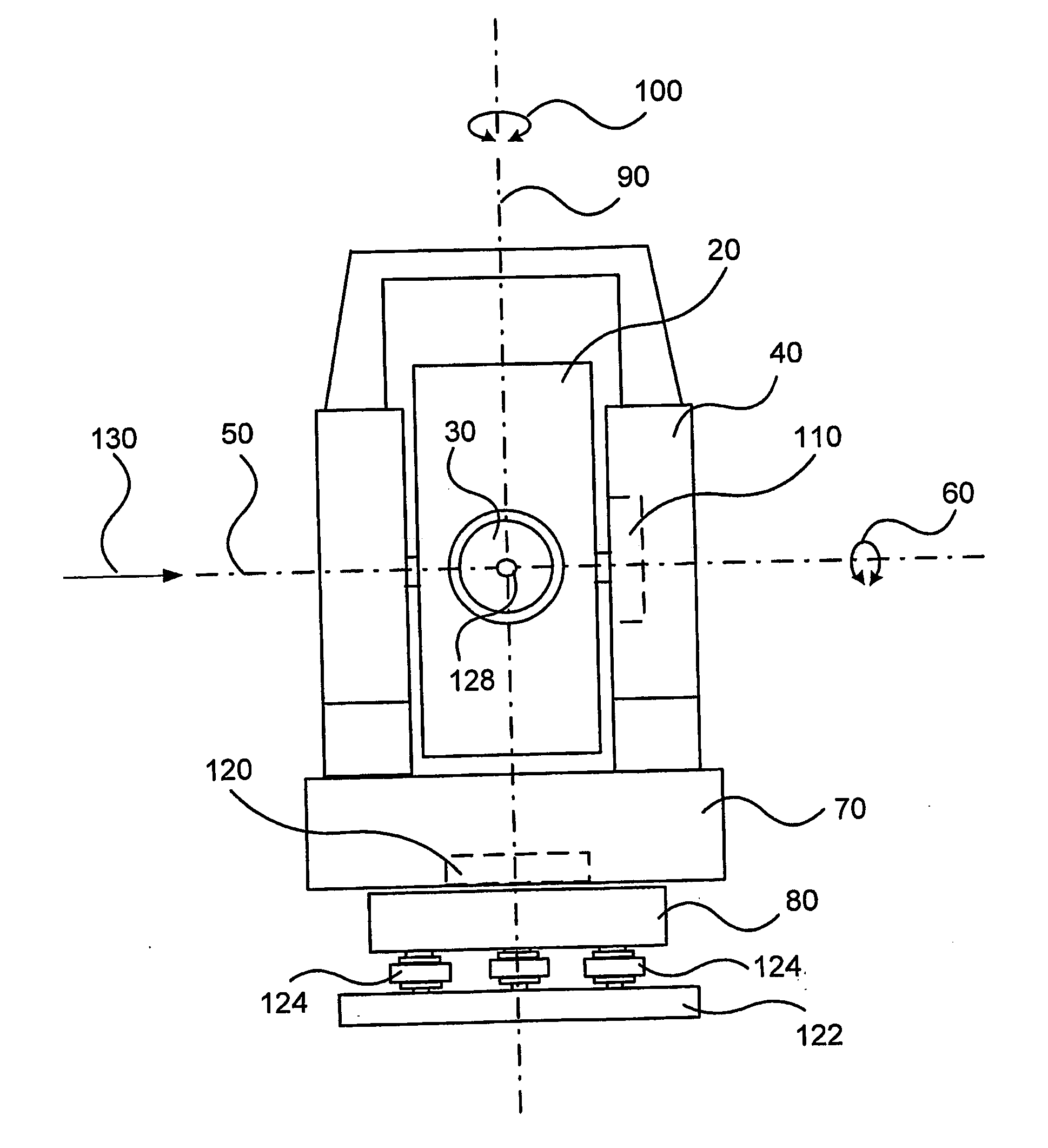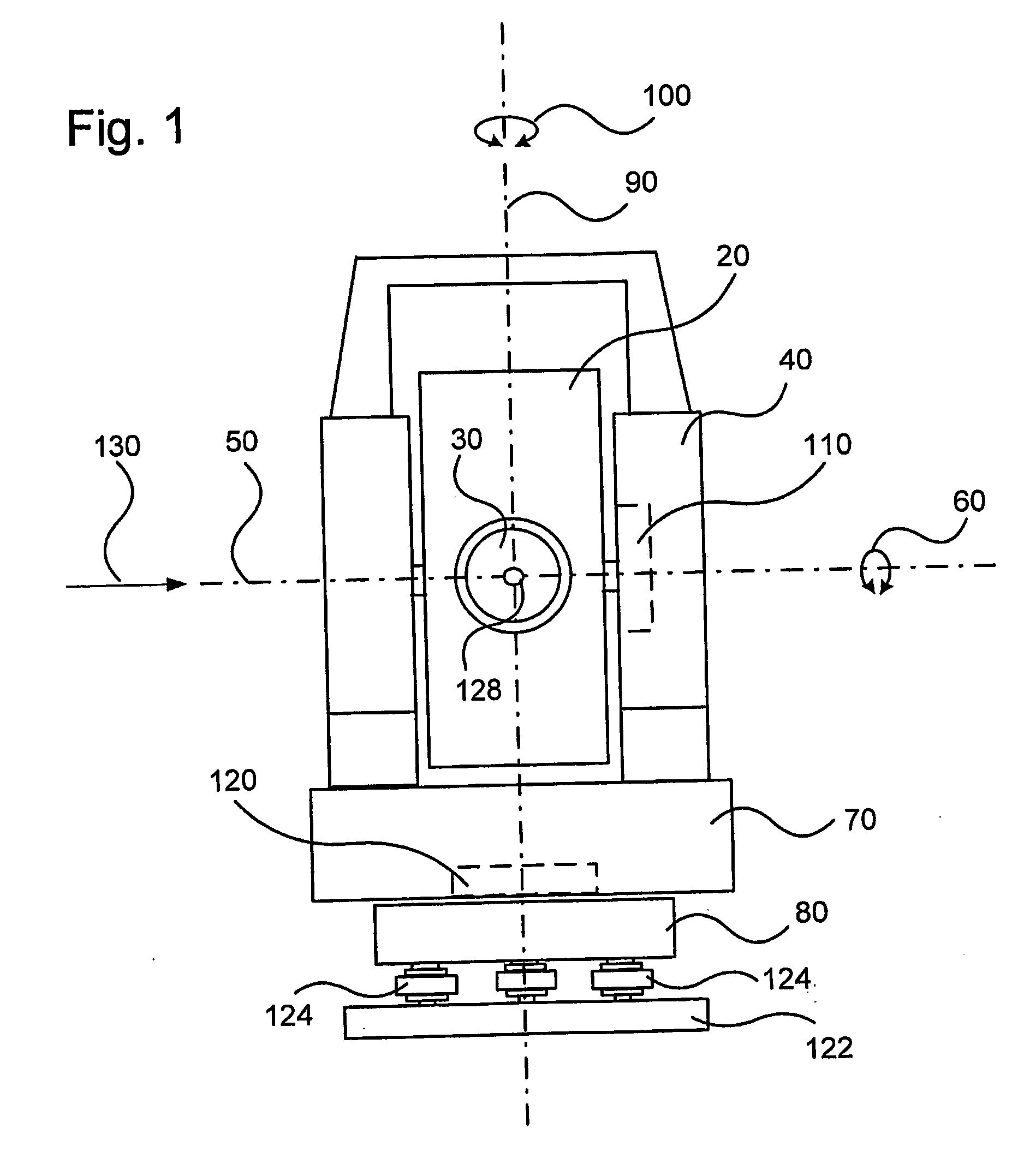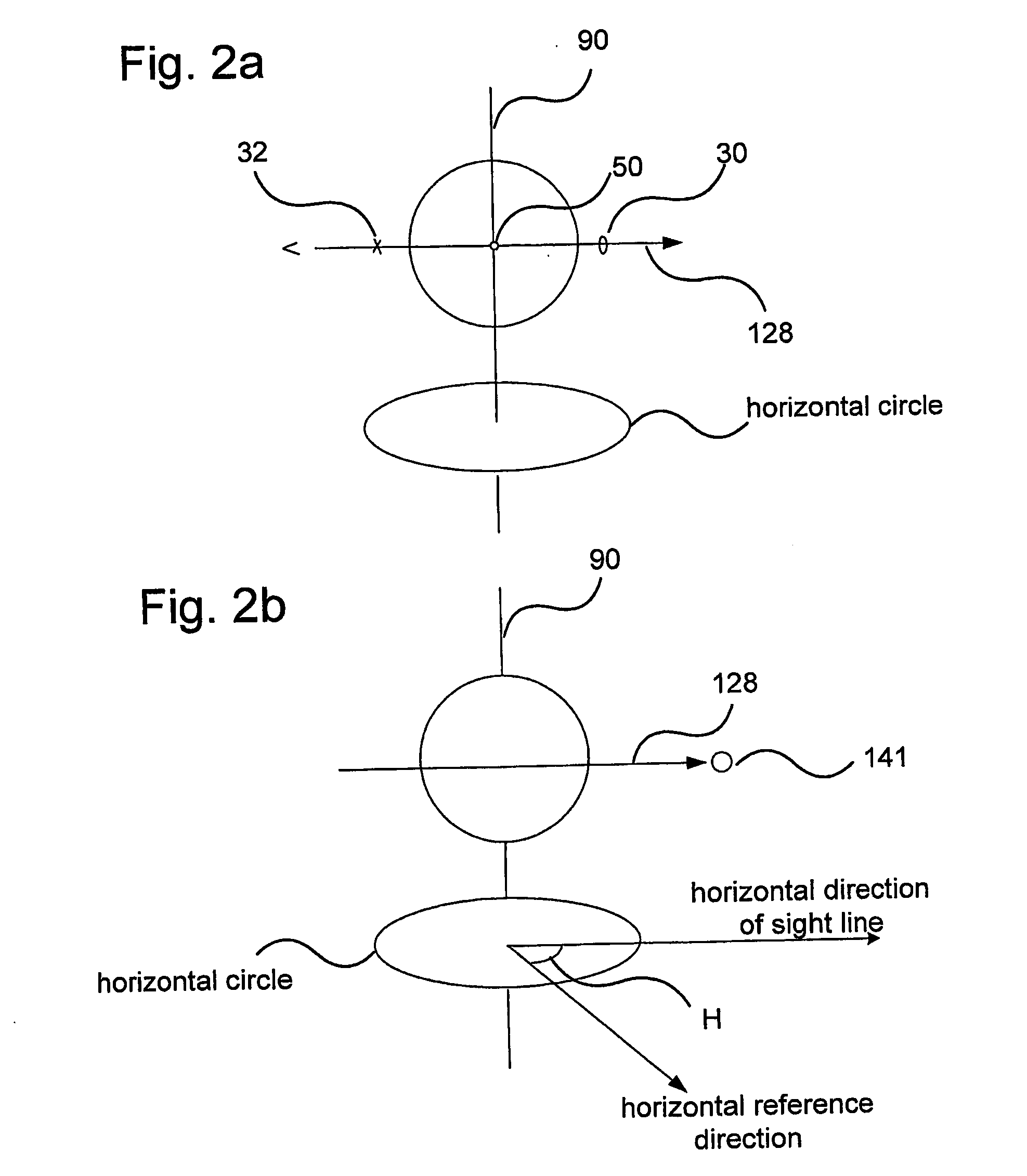Surveying instrument with compensation for mechanical errors
a technology of mechanical errors and surveying instruments, applied in surveying instruments, instruments, height/levelling measurement, etc., can solve the problems of reducing accuracy and easy mechanical shock of the surveying means, and achieve the effect of improving the accuracy of the aiming of the instrument, reducing the need for user interaction, and reducing the mechanical inaccuracy of the surveying instrumen
- Summary
- Abstract
- Description
- Claims
- Application Information
AI Technical Summary
Benefits of technology
Problems solved by technology
Method used
Image
Examples
first embodiment
[0060]FIG. 3 shows a schematic block diagram of a first embodiment of a control system 200 for use in a surveying instrument 10 of the type shown in FIG. 1.
[0061] As indicated above, driver 110 is adapted to cause the movement of the movable unit 20 around the first axis 50, also referred to as the trunnion axis. The angle of deviation of the sight line from a truly vertical line is herein denoted V. Hence, activation of driver 110 is the main cause for change of the angle V.
[0062] Likewise, driver 120 causes the movement of the housing 40 around the second axis 90. The angle H is the angular deviation from a horizontal reference direction. The reference direction may, e.g. be the direction towards north. Hence, activation of driver 120 is the main cause for change of the angle H.
Control of Vertical Output Value V
[0063] With reference to FIG. 3, a sensor 210 is provided for detecting the vertically angular position of the movable unit 20 relative to the alidade ...
second embodiment
[0119]FIG. 5 shows a schematic block diagram of a second embodiment 200B of a control system for use in a surveying instrument 10 of the type shown in FIG. 1. The control system 200B operates to control the drive arrangements 110 and 120, respectively.
Vertical Aim
[0120] The control system 200B according to the second embodiment includes a vertical sensor 210 delivering a detected signal Vs to an input 271 of a vertical position generator 272. The vertical position generator 272 also has an input 273 for receiving a vertical error correction value VEC. The vertical position generator 272 generates an accurate vertical position value V in response to the values received on the inputs 271 and 273.
[0121] The output signal V is delivered to an input 274 of a first controller 280. The first controller 280 also comprises an input 290 for a reference signal value Rv which may be set by a user or operator. The reference signal value Rv is indicative of a desired value for...
PUM
 Login to View More
Login to View More Abstract
Description
Claims
Application Information
 Login to View More
Login to View More - R&D
- Intellectual Property
- Life Sciences
- Materials
- Tech Scout
- Unparalleled Data Quality
- Higher Quality Content
- 60% Fewer Hallucinations
Browse by: Latest US Patents, China's latest patents, Technical Efficacy Thesaurus, Application Domain, Technology Topic, Popular Technical Reports.
© 2025 PatSnap. All rights reserved.Legal|Privacy policy|Modern Slavery Act Transparency Statement|Sitemap|About US| Contact US: help@patsnap.com



